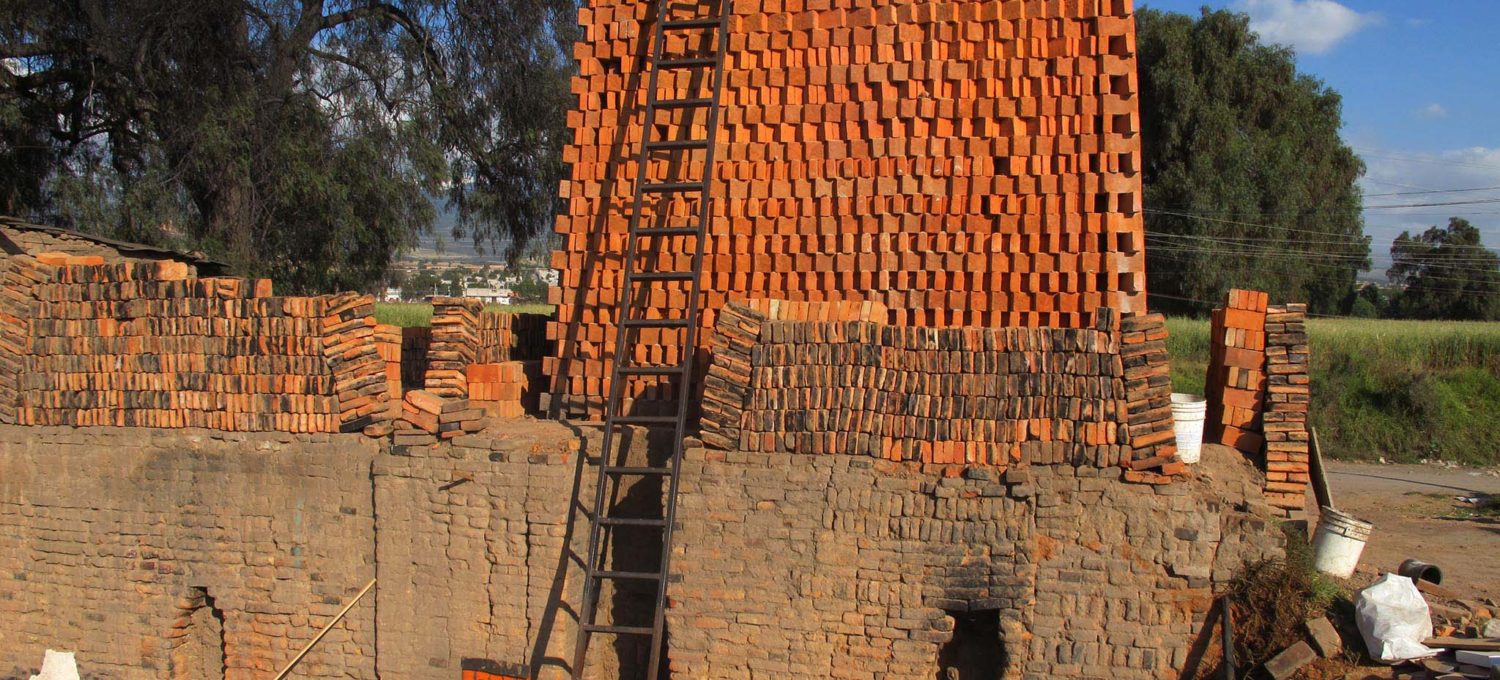The semi-detached rural village of San Francisco in the far north east of Iztapaluca was one last outpost of building before wide fields of wheat, pepper trees and giant agaves reconquered the landscape. So the city yields to the countryside. I turned back and followed the curve of the city’s edge back westwards.
Late November in the Valley of Mexico, just after the rainy seasons have ended, is comparable to spring. Temperatures are mild. The fields are golden green and flowers bloom. Butterflies flutter and bees swarm. Swallows swoop over the hilltops. Pepper trees and willows droop lazily over winding dirt roads. The last remnants of water are drying in the ditches.
I walked among the concrete farms and fields toward the hills half-covered by buildings. Suddenly there was a change, the buildings scattered through the flat fields were made of red brick. I walked along a culvert surrounded by brick with a basin full of water. It seemed like some rural idyll from the 19th century. Willows dotted the bank. Walking further up along a dirt road I saw a 1½ story high redbrick structure, like a miniature ziggurat.
As I walked closer I saw brown colored wet bricks drying in neatly ordered rows. A man came out of a shack from behind the low red brick tower. He was short and thin with fine features, in his early thirties and wore glasses. He moved with limber agility among the piles of bricks and stepladders.
I asked him how long his oven had been there. He said for twenty years. Several families nearby had brick ovens and his father had run this brick kiln before him. It was hard work and not very profitable but stable. On the edge of the city there is constant building so demand is constant. All kinds of people came in pick-up trucks to buy the bricks. He had to excavate the mud from the field, mix it, form it, pre-dry it and then put it into the oven. It was a lot of work to be done by hand by one man.

The fact that bricks are not as regular as concrete blocks puts them at a competitive disadvantage. He sold them for three pesos per brick.
He told me his family as far back as he could trace had worked brick kilns. Three generations ago they were in Santa Bárbara westwards and the small village was called Hornos de Santa Bárbara. As the city engulfed them they had moved it outwards to San Francisco. And earlier they had been even closer to the center of the city in Tacuba. Brick ovens were a hazard and kilns require space – you can´t really have them within the city.
Like urban nomads they had moved every several generations leaving behind a trail of stone.
The building activity in an area of the city under construction gives a niche to local producers of constructions materials, such as the owners of the vast gravel quarries surrounding the city or these small artisanal producers of bricks. And they move outward with the city as it grows. This dynamic is what brought them to the edge of Iztapaluca.
I left the kiln and walked upward among the cactus-lined fields towards the Cerro del Tejolote Chico. Golden wheat gleamed up the hillside and I saw a combine combing the fields below me. Barbed wire and stone separated the parcels from tree-lined dirt roads.
Amid this outburst of spring I started to feel that the city too was alive, its bricks painstakingly dried in a field, lifted into an oven, stacked and transported to become walls and buildings. The city is potentially everywhere; all that is required is a little rain of people to make it grow.
